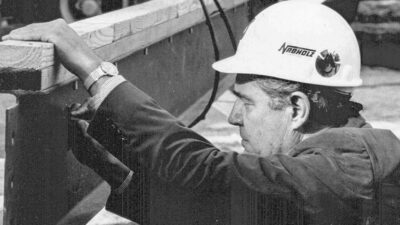Who hasn’t heard of “toxic black mold”? After all, it’s been featured on popular shows like 20/20 and 48 Hours, so it must be real, right? Let’s examine the case.
Here are some things I have been told either directly by “inspectors” claiming to be mold experts or by home or business owners who heard it from one of these so-called experts:
- from a talk-show expert: “…Toxic Black Mold is in Texas but has not yet reached Arkansas…”
- from a homeowner looking to purchase chemicals from a janitorial supplier to treat his home: “Don’t put bleach on toxic black mold it just makes it mad.”
- from a home inspector in a draft report: “Bleach does not kill mold it just makes it go dormant.”
- from a homeowner trying to determine if he had a mold problem: “The last guy stuck his nose up to the basement wall and said, ‘Yep, you have toxic black mold, but for $12,000.00 I can get rid of it.’”
Let me state two things that, unlike the statements above, are absolutely true about toxic black mold:
- There is no such thing as toxic black mold. The term “toxic black mold” was popularized by news reporters in New York who were referring to an outbreak of a medical condition found in several children from a small neighborhood.
- To quote a very good friend and regulator in Arkansas, “Mold is not an alien from outer space that has dropped out of the sky to kill your children.”
So, if “toxic black mold” doesn’t exist, then what is the truth and what should we worry about when it comes to mold? First, the term “toxic mold” is not accurate because mold itself is not toxic or poisonous; although, certain molds can be toxigenic, meaning that they produce toxins called mycotoxins (CDC, 2012). In terms of potential health hazards, all molds–even toxigenic molds–are created equal. Second, it’s important to realize that we already live with mold and mold spores every day in every way–at home, in our cars, at school, at work, at the park, pretty much everywhere. However, when we do find it in our living or working spaces, we do need to do something about it; and the first thing we need to do is find out why it’s growing on our walls (or books, or shoes, or kids’ toys, etc.). To figure that out, you need to know the two basic rules about mold:
-
MOLD RULE #1: Without excess moisture, mold will not grow in your home or workplace.
-
MOLD RULE #2: Without excess moisture, mold will not grow in your home or workplace.
Now that we’ve established those important rules, let’s talk about where this excess moisture might come from and the situations that could put you at risk of having a mold problem:
- Leaks – Whether it be a leaky roof, hot water heater, washing machine, ice maker, sink drain, shower pan, or anything else, leaks are common sources of excess moisture and can quickly create an environment where mold will thrive.
- Too much water in your air – If the relative humidity in your home or workplace is above 55%, it’s too high and can lead to mold growth (you can measure relative humidity yourself with an inexpensive and easy-to-find hygrometer). I often see this result from running a big air conditioning unit on those hot August days when you need to cool down RIGHT NOW. The problem with this is that the unit cools the air so fast that it shuts off before the de-humidifier part of the unit can do its job of removing excess moisture from the air.
- Too much water in your crawlspace – Wet air can make its way inside through normal construction penetrations for ducts, pipes, etc. If your HVAC ducts are in a crawlspace, they can pick up damp air and spread it through the entire duct system and into your living or work space. Even if you don’t see mold on the walls, it may be in the ducts, which means it’s in the air you breathe every day.
If you do have a real mold problem (and not a mythical case of toxic black mold), what can you do? I would love to give you a one-size-fits-all solution for any and every mold problem out there, but the reality of it is that every situation is different, so I can’t do that. What I and other mold remediation specialists can do is evaluate your unique situation and give you a fair, honest and scientifically-accurate appraisal and some ways to solve your mold problem.
As a final note of encouragement, if you have mold in your home or business, you probably won’t have to tear it down, move to Arizona, go live with your parents (well, maybe for a day or two), or file for bankruptcy. Most mold problems can be solved without major inconvenience or financial burden. That said, if you have significant mold growth, then you must have a lot of water coming from somewhere, and that water may be causing structural damage or providing a haven for termites. These things, not the mold, can cost big bucks to fix, so the best thing to do is stay vigilant. If you see even a hint of mold in what should be a dry area, or if you suspect you might have a leak or too much moisture in your air, don’t ignore it. Check it out or call a professional, like myself, to check it out for you.
Nabholz Environmental Services offers a wide range of environmental expertise, specializing in commercial assessment and abatement. We specialize in Phase I and Phase II Environmental Assessments, Asbestos Abatement and Mold Remediation. Our team is committed to providing clients with the same level of quality, exceptional customer service, and integrity that has been synonymous with the Nabholz name since 1949.

